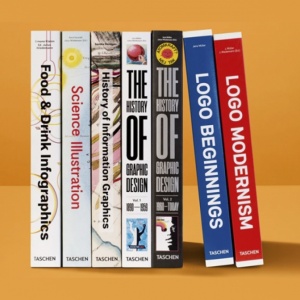Henri Matisse. 1869-1954. Master of Colour: Volkmar Essers
Волькмар Эссерс. Книга на английском языке. English language book
Brilliant color, simple forms, and purity of expression are the hallmarks of Matisse's work.
Henri Matisse (1869-1954) is known not only as one of the most important French painters of the 20th century but also as co-founder and leading exponent of Fauvism. His work reflects an ongoing quest for
Henri Matisse (1869-1954) is known not only as one of the most important French painters of the 20th century but also as co-founder and leading exponent of Fauvism. His work reflects an ongoing quest for
Полная аннотация
Автор
Издательство
Все характеристики
Аннотация
Brilliant color, simple forms, and purity of expression are the hallmarks of Matisse's work.
Henri Matisse (1869-1954) is known not only as one of the most important French painters of the 20th century but also as co-founder and leading exponent of Fauvism. His work reflects an ongoing quest for the expressive power of pure, brilliant colors and simple forms; as a result, the realistic presentation of nature often retires to a secondary position.
For Matisse, color did not serve as a tool for the expression of subjective feelings, but rather became the equivalent of light itself: it functioned as a pure medium in the creation of an autonomous pictorial space: "Out of my fruitful work with discovered tones there must emerge a vital color harmony, a harmony that is analogous to a musical composition".
As a creative artist, Matisse was not only a painter, but also experimented with other materials: he produced glass windows and theatre designs and created significant sculptures in bronze, ceramic and clay. In old age, confined to a wheelchair, he created collages with coloured paper, glue, and scissors: his famed gouache cut-outs.
Henri Matisse (1869-1954) is known not only as one of the most important French painters of the 20th century but also as co-founder and leading exponent of Fauvism. His work reflects an ongoing quest for the expressive power of pure, brilliant colors and simple forms; as a result, the realistic presentation of nature often retires to a secondary position.
For Matisse, color did not serve as a tool for the expression of subjective feelings, but rather became the equivalent of light itself: it functioned as a pure medium in the creation of an autonomous pictorial space: "Out of my fruitful work with discovered tones there must emerge a vital color harmony, a harmony that is analogous to a musical composition".
As a creative artist, Matisse was not only a painter, but also experimented with other materials: he produced glass windows and theatre designs and created significant sculptures in bronze, ceramic and clay. In old age, confined to a wheelchair, he created collages with coloured paper, glue, and scissors: his famed gouache cut-outs.
Свернуть
Характеристики
Автор
Издательство
ID товара
385654
ISBN
978-3-8365-3126-9
Язык
Английский
Страниц
96 (Мелованная)
Вес
882 г
Размеры
305x245x15 мм
Тип обложки
7Б - твердая (плотная бумага или картон)
Оформление
Частичная лакировка, супер
Иллюстрации
Черно-белые + цветные
Все характеристики
Нет в продаже
Рецензии на книгу
Читали книгу? Как она вам?
+50 ₽ за рецензию
Вы можете стать одним из первых, кто напишет рецензию на эту книгу, и получить бонус — до 50 рублей на баланс в Лабиринте!
Покупатели 0
Эксперты 1
Книги из жанра
2 8195 638 -50% Еще 4 дня
10 15320 306 -50% Еще 4 дня
Что читать вместе с книгой "Henri Matisse. 1869-1954. Master of Colour"

Taschen. От магазина комиксов до книжного бренда класса люкс
Ноябрь 2023 •  6 559
6 559


